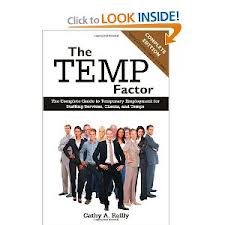There are new tools released every day that make our lives more complex, but I’ve been looking at IFTTT lately, and it’s all about making life simpler.
IFTTT stands for “if this, then that.” It’s an online tool that looks for an “if” and then takes a “then” action. The most common examples you might be familiar with are Outlook inbox rules. For example, IF that creepy coworker sends an email to you, THEN it gets marked as “trash.” Or IF your boss sends you an email, THEN your rule marks it with a flag to follow up.
IFTTT does that on a bigger scale. For instance, it can monitor your email account. If you receive an email with an attachment, it can automatically download the attachment to your Dropbox folder to save it.
Or even simpler-you can set it to monitor the weather and send you a text message if it is raining/snowing so you don’t forget your umbrella. Or maybe you get an email from your best friend, and it sends you a text message alert as a heads up. There are hundreds of ideas for rules (or “recipes,” as they like to call them), and the only limit is your imagination.
 Here are 5 IFTTT recipes I think recruiters could use
Here are 5 IFTTT recipes I think recruiters could use
- share relevant blog feeds on Linkedin using a Feedly category (link)
- send yourself an email whenever someone posts a job or resume on Craigslist (link)
- dictate a voice memo and email transcription and mp3 file to yourself (link)
- use Google calendar to schedule content for your recruiting/careers page on Facebook (link)
- send a text message that calls your phone (for those times when you’re stuck with that candidate who just won’t stop talking despite all of your nonverbal cues) (link)
More ideas for IFTTT recipes from around the Web
- https://ifttt.com/recipes?sort=popular
- http://www.searchenginepeople.com/blog/automate-your-life-with-ifttt.html
- http://lifehacker.com/5935658/how-to-automatically-archive-your-life-with-ifttt-and-evernote
- http://www.evolvingseo.com/2012/01/04/ifttt-ideas-review/
- http://www.philly.com/philly/business/technology/The_Wonder_of_Tech_IFTTT__Tech_thats_your_personal_assistant.html
- http://www.makeuseof.com/tag/5-awesome-ifttt-recipes-start-today/
- http://chronicle.com/blogs/profhacker/how-to-use-ifttt-and-why-you-might-want-to/35973

